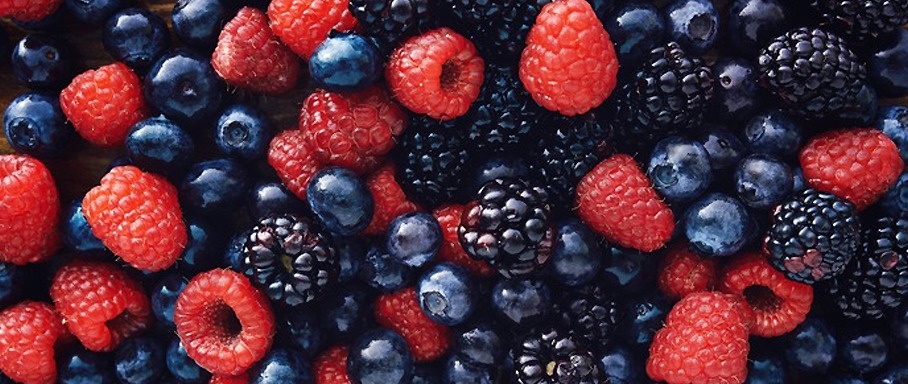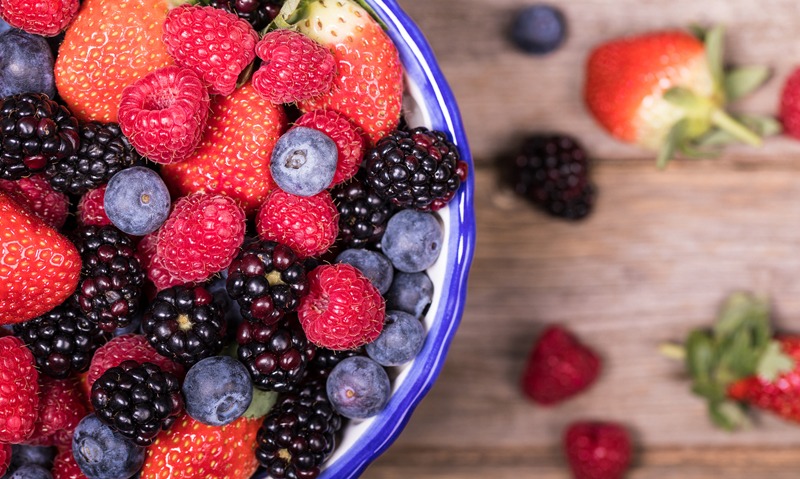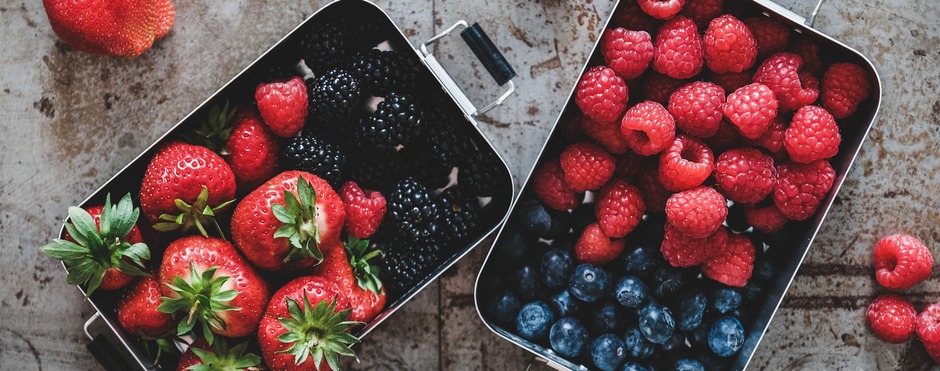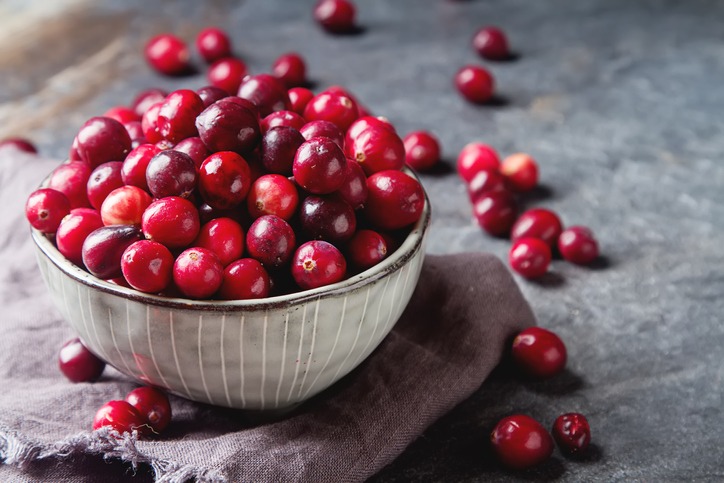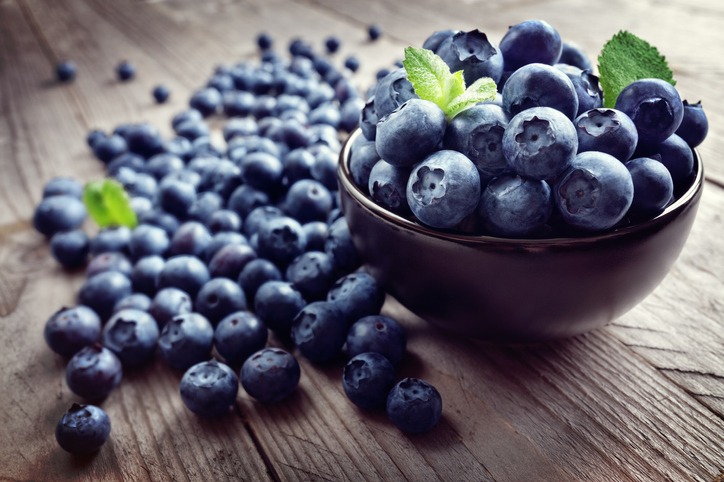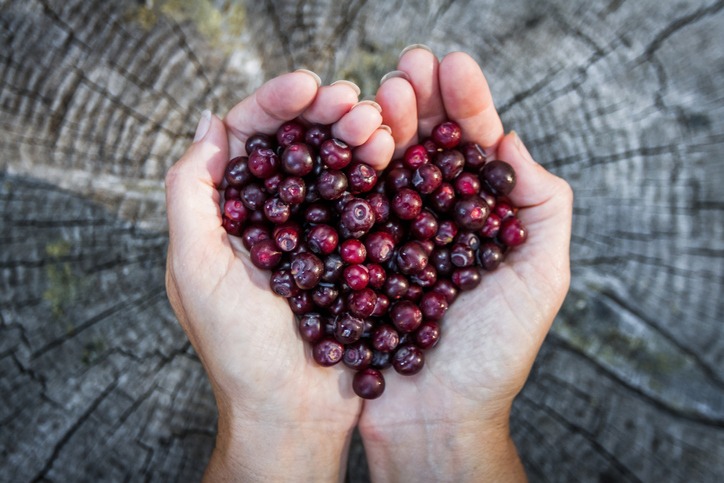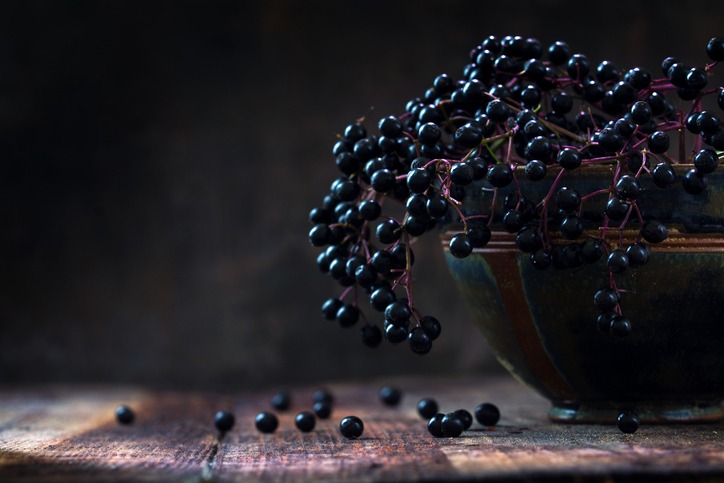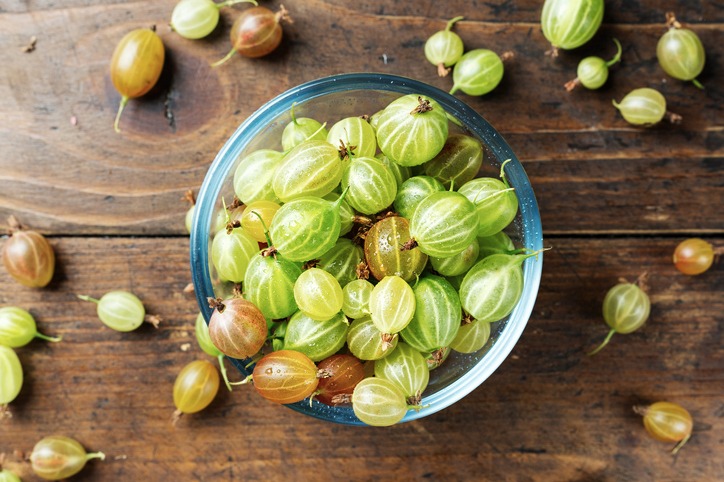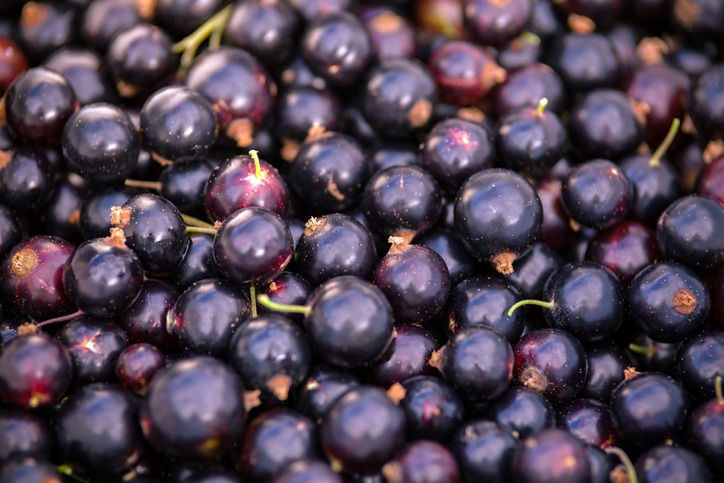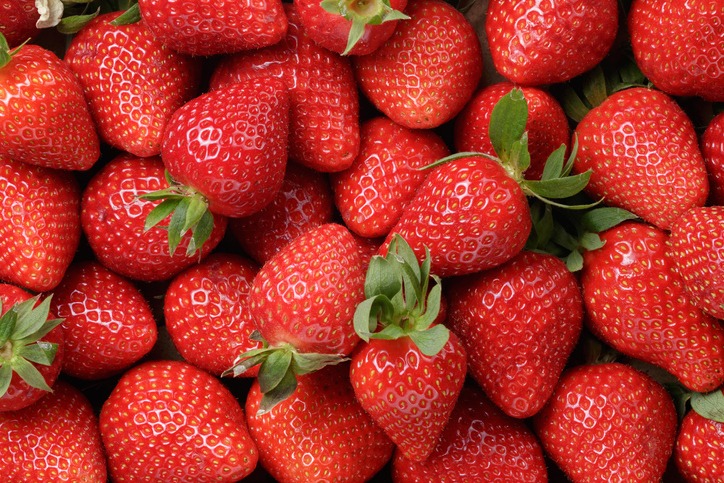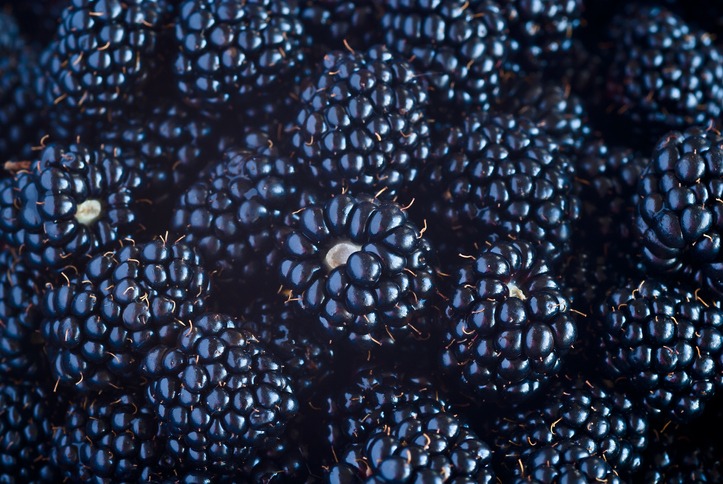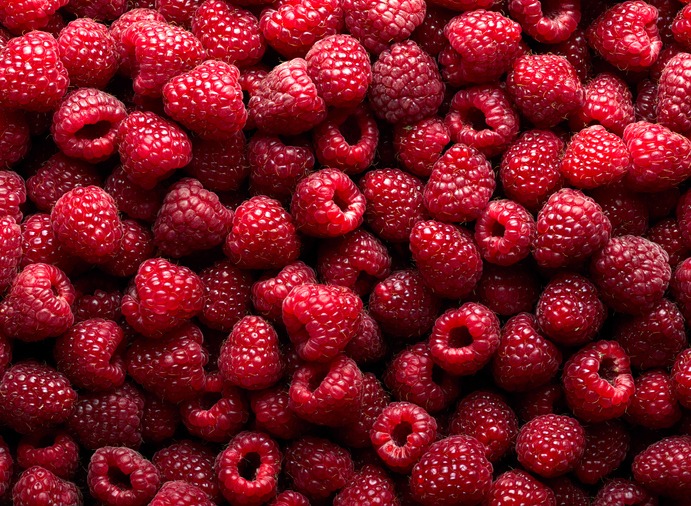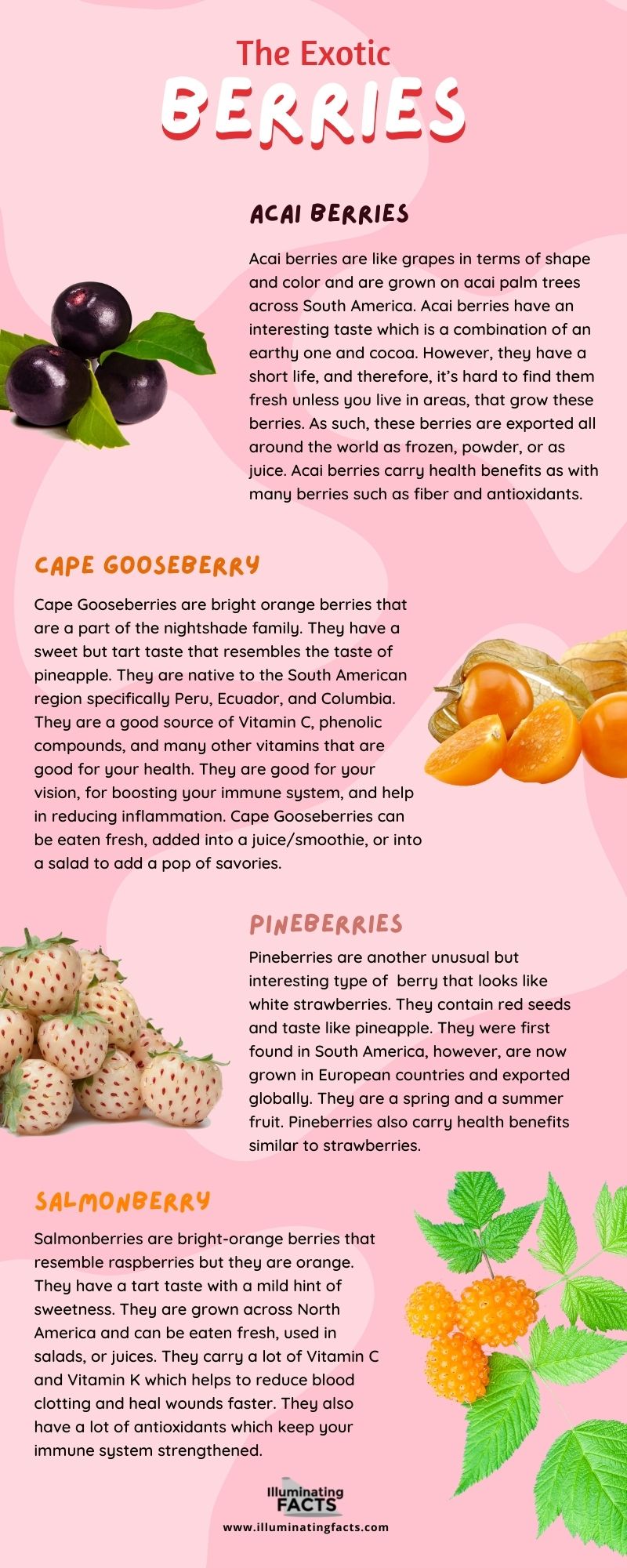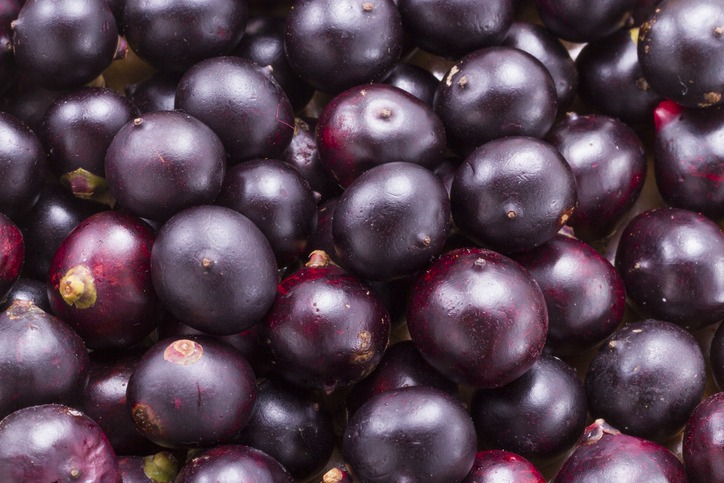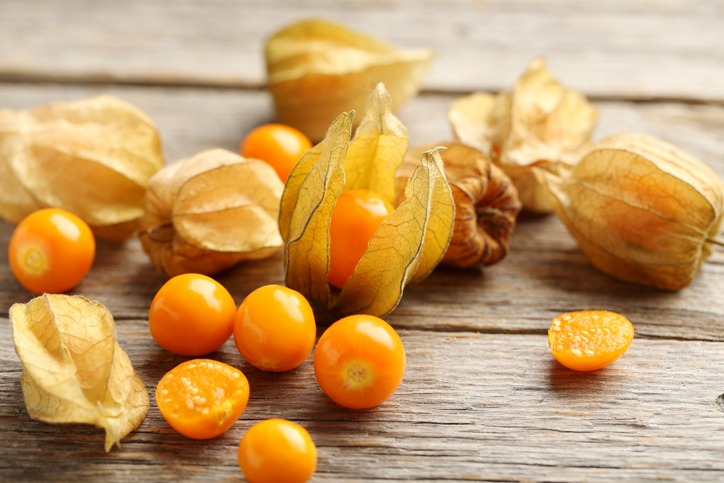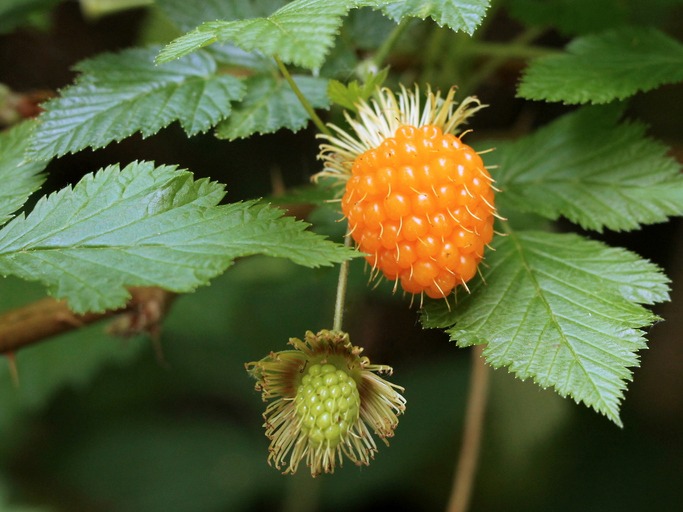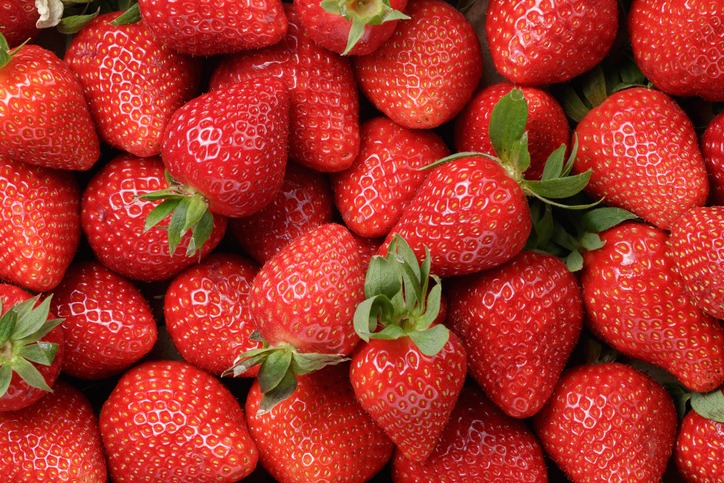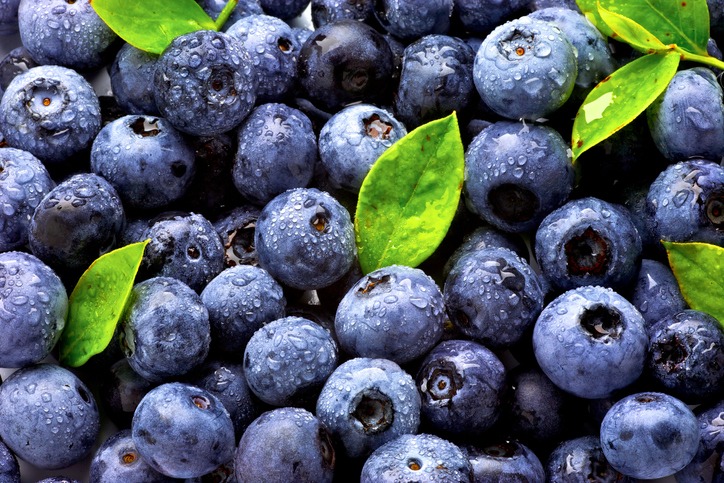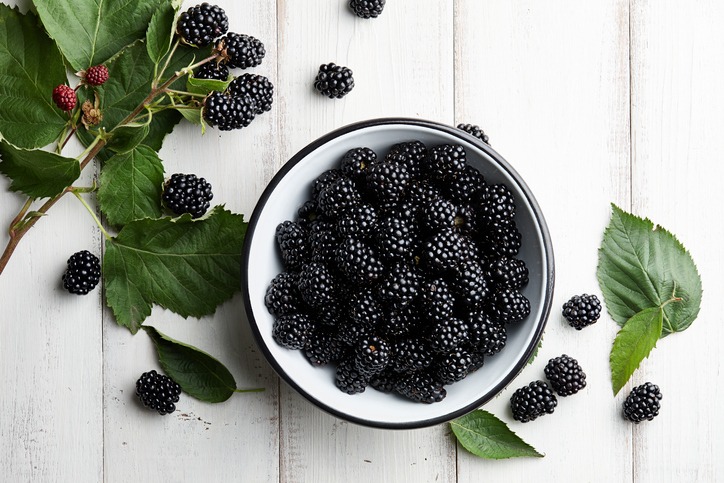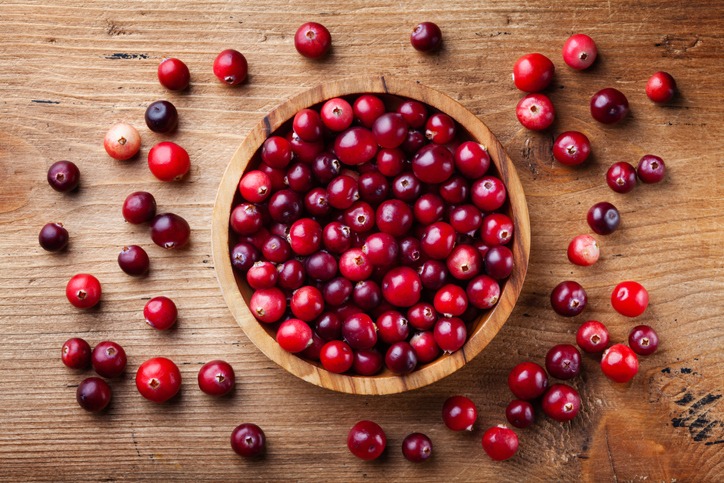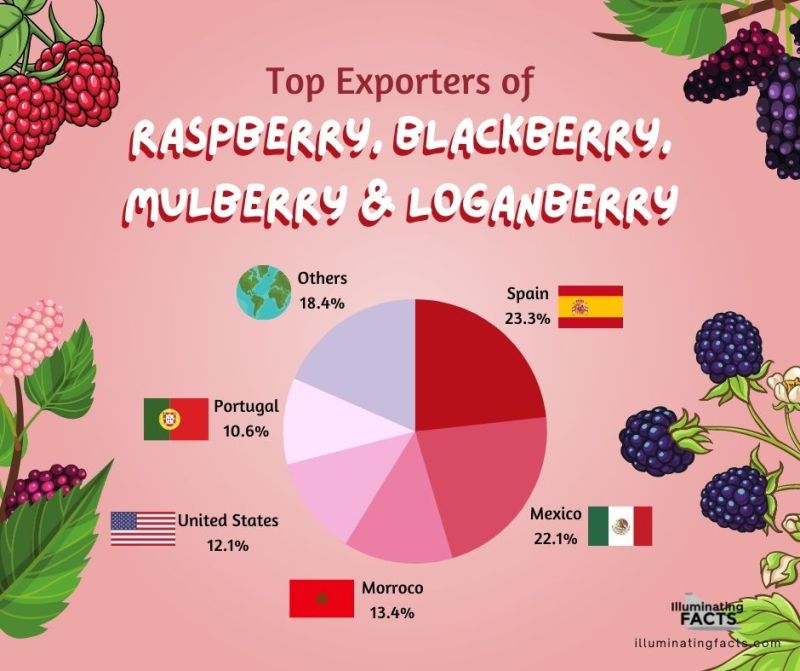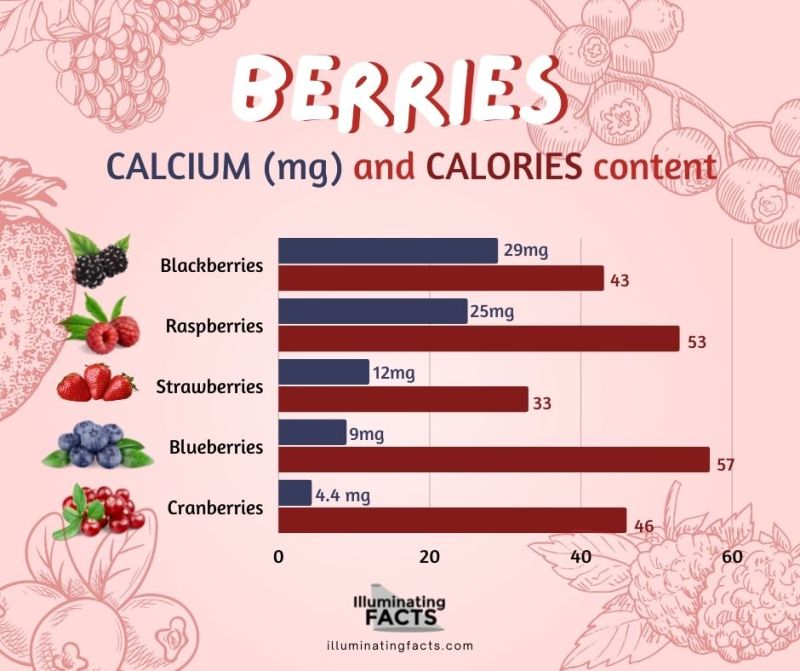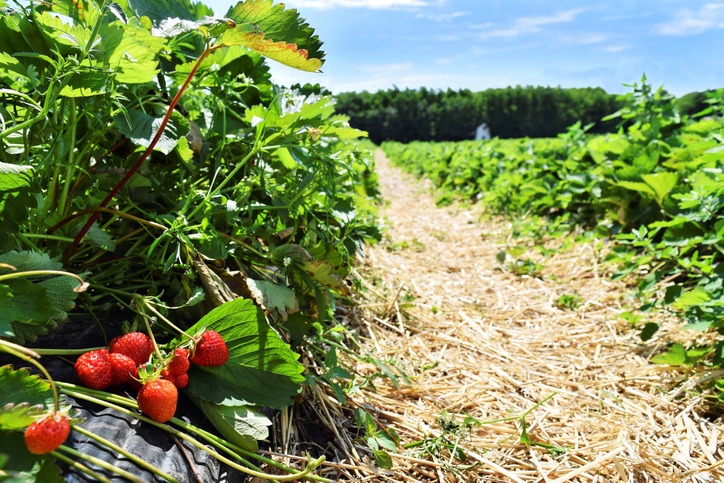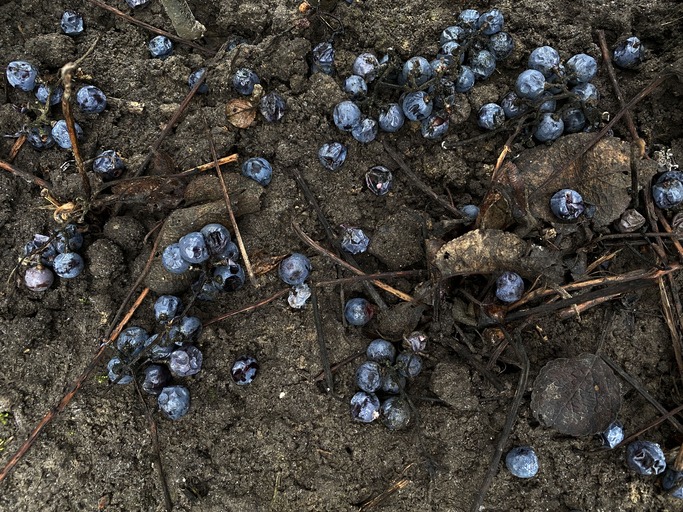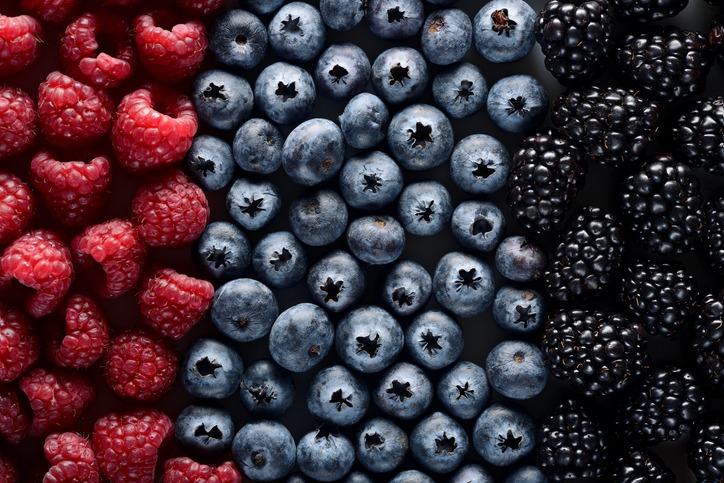Background
Berries are small-sized, edible fruits that come in different varieties, shapes, colors, and tastes. They are usually juicy, pulpy, rounded, and do not have any pits or stones in the middle. They are eaten widely across the world and used in many dishes, and as such, many berries are commercially important and are a vital part of a culinary experience.
Under a botanical definition, berries are a fruit with seeds and pulp produced out of the ovary of a single flower and are fleshy. This fruit does not have a line of split or weakness as with many fruits which means that berries are indehiscent.
This post will cover a wide range of interesting information about berries from history, types and variations of berries, and economics, to the nutritional content of berries, and the significance of berries in health, cultures, and culinary.
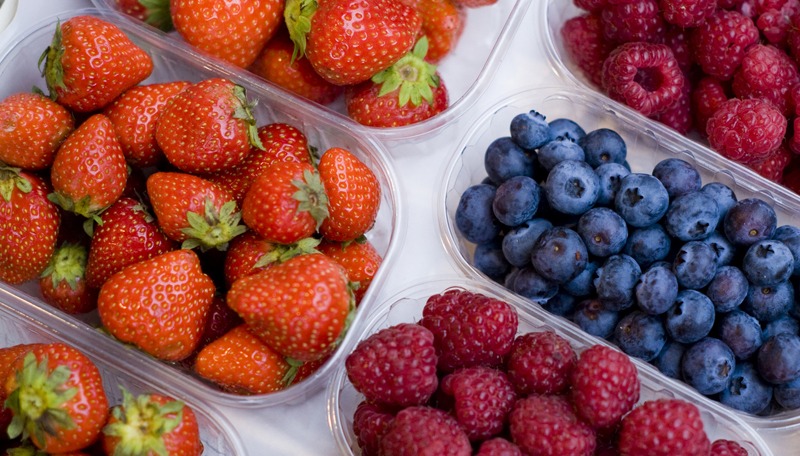
History
The history of berries stretches far back before the beginning of agriculture where it has remained one of the primary sources of food for humans and other primates. Berries were an indispensable fruit for hunter-gatherers for many years, and even today, wild berry harvesting is a popular hobby in many parts of the world. With time, humans learned that berries can be stored and used in non-seasonable times such as winter. Berries were also converted into fruit preserves and combined with different dishes of those times[1].
Berries then started to be cultivated in regions around the world, especially in Europe and North America. Some types of blackberries and raspberries have been grown since the early 17th century, and berries such as blueberries and cranberries have been grown in the North American region for more than a century now. In East Asia, Japan led with the cultivation of berries between the 10th and 18th centuries with berry crops being named ‘ichibigo ichigo’. In the modern world, the strawberry has consolidated its position as the top and most cultivated berry in the world, and its total global production is twice of all other berries combined[2].
Mentions of strawberries have been found by ancient Romans who believed that strawberries had healing properties, however, it was not an important fruit in agriculture. Wild berries (also known as woodland strawberries or Fragaria vesca) were first started to grow in France in the 14th century. Following this hautbois or musk strawberries were being grown in European regions by the 16th century. After this, the Virginia Strawberry was cultivated in many regions of the United States and Europe.
However, the garden strawberry—the most popular and consumed strawberry today—was interestingly an accident as the garden strawberry was a crossbreed between the Virginia Strawberry and Chilean Strawberry. This crossbreed was noted by a French gardener in the 18th century, it was studied closely by French botanists, and since then, many farmers have used this breeding of strawberries to cultivate the tons of strawberries eaten passionately around the world.
All in all, the history of berries is quite interesting and goes back to the time of hunter-gatherers when it has been a vital part of their food, and since then, it has been a crucial part of dishes, cultures, and economies of countries around the world.
Types and Variations of Berries
Berries are not limited to the commonly known ones such as strawberries, blueberries, and raspberries as there are many exotic types of berries that people are unaware of. Different types of berries varieties exist which are packed with healthy nutrition such as vitamins, antioxidants, and minerals.
Since the botanical definition of a berry is quite vast, and if considered, bananas, tomatoes, and oranges will be included. For the purposes of this section, we will consider fruits which are small, round, fleshy, edible with no stone or pit in them. As such, this list of types and variations of berries will be under the consideration of the culinary definition of berries.
In this section, we will look at the most popular and the less-popular types of berries in detail which are a must-try and should be a solid consideration for being included in your diet.
Cranberries
Cranberries are a popular type of berries which are red in color and are usually sour tasting, considered a “superfood.” They are full of vitamins, especially Vitamin C. Cranberries are usually used as sauces, juices, or as additions to dishes including casseroles or desserts. They initially were cultivated in the North American region; however, they now grow across Chile, the United States, and Canada.
Blueberries
Much like cranberries, blueberries are known as a superfood because of the nutrients and the health benefits of consuming them. They are a deep-purple color, have juicy flesh, and a sweet taste as opposed to cranberries. Studies have shown that blueberries have properties that are good for the eyes and for cardiovascular health. They are also low in fat, high in fiber, and packed with Vitamin C and K. They are grown widely across the world in regions including North America, Europe, and the Southern Hemisphere.
Huckleberries
Huckleberries are very similar to blueberries and may at times also be confused with them. However, huckleberries are a completely different genus. Huckleberries are wild berries that are not very commonly cultivated. They were used as traditional medicine by Native Americans and First Nations and since then have been used in many food items such as jams, pies, pancakes, etc. They have relatively less sugar and carbs than Blueberries, and as such, could offer a solid alternative. Huckleberries grow widely in the northwestern region of the United States and the western region of Canada.
Elderberries
Elderberries are intense blue-purple-colored berries. These are one of the healthiest berries as they are packed with Vitamin A and C with a good amount of minerals in them. In addition, they have also been used as traditional medicine and can provide relief for minor medical issues such as cold and flu as they can be used in tea and other extracts. However, it is very important to note that uncooked elderberries and parts of the plant are poisonous and only cooked berries are safe to ingest. Moreover, excessive amounts of consumption have been shown to cause illness too. So, it is better to consume it in moderation.
Gooseberries
Gooseberries look different than other berries discussed so far, they are usually green in color (some bushes may produce other colors such as purple, red, etc) and grow on bushes. They have a sour taste, rather they are one of the sourest berries out there. However, gooseberries—as with other berries—are full of important nutrients and antioxidants. However, dark-colored gooseberries have higher levels of anthocyanins.
Black and red currants
Red and black currants are type of berries that are grown in clusters similar to grapes. Their size is similar to blueberries and they have a tarty but sweet taste. Red currants have been shown to have high levels of antioxidants, and as such, are a great healthy food. However, it must be noted that black currants have shown relatively higher levels of anthocyanins than red currants[3].
As was aforementioned, for the purposes of this section, we will adapt the culinary definition of berries. Let’s discuss some of the types of berries that like to think are berries but are not under strict botanical definition.
Strawberries
Strawberries are the most consumed berries in the world and are sometimes called a superfood. They are a popular summer food and are grown widely across the world in many regions. They are usually red in color (however, there are white strawberries called pine berries). Strawberries are full of Vitamin C and are a delicious-treat to eat, being vastly used in dishes globally. Eating strawberries can reduce blood pressure, are good for your cardiovascular health, and lowers inflammation.
Blackberries
As with the case of strawberries, blackberries are not ‘true berries’ as per the botanical definition. However, nevertheless, generally, they can be classified as berries. They are one of the most delicious ones to eat and are commonly considered a superfood. Blackberries are a great source of antioxidants and are rich in Vitamin C and Fiber. The most nutrient-packed blackberries you can eat are the ones picked from the wild. They are an amazing fruit for your cardiovascular health.
Raspberries
Raspberries are another superfood, as classified by the masses, and pack great health benefits. They are a summer fruit with a lot of Vitamin C and have the most amount of dietary fiber out of all the berries. Raspberries come in red, golden, black, and white colors. In addition to this, raspberries have scientifically-proven benefits in reducing the risk of cancer, heart diseases, and diabetes. As such, they are an amazing type of berry fruit.
Mulberries
Mulberries grow in different colors including purple, red, black, and at times, even white. They resemble raspberries and blackberries but are longer in length. They are relatively sweet but still hold a tart taste. Mulberries are not toxic, as such, you can eat them directly or you can incorporate them into your dishes as with many other berries mentioned above. However, mulberries can be—at times—rare because they are fragile and only grow through the summer. As such, you will need to freeze them over time. Studies have shown that they improve cardiovascular health, and reduce and manage the risk of diabetes and obesity[4].
Exotic Berries
We have covered a wide variety of berries. In this section, let’s have a look at some of the most exotic berries that exist.
Acai Berries
Acai berries are like grapes in terms of shape and color and are grown on acai palm trees across South America. Acai berries have an interesting taste which is a combination of an earthy one and cocoa. However, they have a short life, and therefore, it’s hard to find them fresh unless you live in areas that grow these berries. As such, these berries are exported all around the world as frozen, powder, or juice. Acai berries carry health benefits as with many berries such as fiber and antioxidants[5].
Cape Gooseberry (also known as Physalis)
Cape Gooseberries are bright orange berries that are a part of the nightshade family. They have a sweet but tart taste that resembles the taste of pineapple. They are native to the South American region specifically Peru, Ecuador, and Columbia. They are a good source of Vitamin C, phenolic compounds, and many other vitamins that are good for your health. They are good for your vision, for boosting your immune system, and help in reducing inflammation. Cape Gooseberries can be eaten fresh, added into a juice/smoothie, or into a salad to add a pop of savories.
Pineberries
Pineberries are another unusual but interesting type of berry that looks like white strawberries. They contain red seeds and taste like pineapple. They were first found in South America, however, are now grown in European countries and exported globally. They are a spring and a summer fruit. Pineberries also carry health benefits similar to strawberries.
Salmonberry
Salmonberries are bright-orange berries that resemble raspberries but they are orange. They have a tart taste with a mild hint of sweetness. They are grown across North America and can be eaten fresh, used in salads, or juices. They carry a lot of Vitamin C and Vitamin K which helps to reduce blood clotting and heal wounds faster. They also have a lot of antioxidants which keep your immune system strengthened.
The Most Popular Berries
There are many types of different species of berries as we have covered in the section above. However, there are a set number of berries that are the most popular and widely consumed. The consumption of berries has steadily increased over the years due to the rising awareness of the health benefits of consuming berries. In this section, we will cover the five most common berries in the United States[i].
1. Strawberries
Strawberries are the most popular berries in the United States and are the favorite berry of the US. According to Food Source Information, an average American consumed approximately 8 pints of strawberries in a year[ii]. Moreover, 94% of the households in America consume strawberries, making them the most popular berry out there.
2. Blueberries
Blueberries are one of the most consumed berries in the United States with a growing demand every year. US per capita consumption of blueberries has approximately increased by three times as compared with the 2000s.
3. Blackberries
Blackberries are another very popular berry in America. According to AGMRC, blackberry production was valued at 31.1 million US dollars, a significant increase from the last year. Moreover, the number of farmers’ markets has increased substantially by over 75 percent since 2008, signifying a strong increase in demand for blackberries not only in America but all around the world.
4. Raspberries
Raspberries have also seen a sharp increase in consumption, making them one of the most consumed berries in America. As per data from the US Department of Agriculture, per capita consumption of raspberries has seen a staggering 475 percent increase in the period between 2000 and 2012.
5. Cranberries
As per the Agriculture Marketing Resource Center, per capita consumption of cranberries in the US is 2.3 pounds which have also seen an increase in recent years. The consumption of cranberries is mostly in juices or smoothies rather than raw.
[i] Contributors, H. S. W. (2009, November 9). 5 most common edible wild berries in the U.S. HowStuffWorks. Retrieved November 12, 2021, from https://adventure.howstuffworks.com/survival/wilderness/5-most-common-edible-wild-berries-in-u-s.htm.
[ii] Strawberries | Food Source Information. (2021, August 4). Food Source Information. Retrieved November 12, 2021, from https://fsi.colostate.edu/strawberries/
In Numbers
Volume of Production
Source: Mordor Intelligence[6]
The graph above illustrates the production of strawberries in metric tons in China. It shows a significant amount of growth between 2016 and 2019, representing a remarkable increase in the production of strawberries by up to 19.70% between 2018 and 2019.
Source: Statista[i]
The graph above shows that California produces the most strawberries in the United States, up to 21.5 million cwt. The US produces, annually, 1.43 million tons of strawberries, accounting for a third of the world’s strawberry production. Good climate conditions make California the largest producer of strawberries in America.
[i] Statista. (2021, May 18). Leading strawberry producing U.S. states 2020. Retrieved November 12, 2021, from https://www.statista.com/statistics/194235/top-10-strawbery-producing-us-states/
Money Made
Source: KTVN Channel 2[7]
According to a research report by KTVN Channel 2, the global berries market value was 39,820 million US dollars which is a colossal figure. Not only this but it is also forecasted that by 2027 the global market for berries will grow up to 54,480 million US dollars due to rising demand for berries with a compounded annual growth rate (CAGR) of 6.2%.
Top Countries
Source: OEC[8]
According to research by OEC, the total trade of raspberry, blackberry, mulberry, and loganberry in 2019 was 2.24 billion US dollars. Out of these, the top 5 exporters were Spain, Mexico, Morocco, the United States, and Portugal. Spain had the largest share of 23% followed by Mexico with a share of 22%.
Top Companies
As per Market Watch[9], the key players i.e., the top manufacturers of berries in the world are as follows (in no ranking order):
- Driscoll’s
- Uren Food Group Limited
- Dabur India
- PepsiCo
- Ocean Spray Cranberry
- Del Monte Pacific Limited
- Agrana Beteiligungs
- Kerry Group
- Symrise
Popular Berries in the USA
Source: Statista[i]
The graph above depicts the share of berries sold in the US in 2020, showing the most popular berries in the United States in 2020. It shows that strawberries, blueberries, and raspberries are the top 3 most sold berries in the United States.
[i] Statista. (2020, November 3). Category share of berries sales in the U.S. 2020, by type. Retrieved November 13, 2021, from https://www.statista.com/statistics/191512/fresh-berry-category-share-in-2011/
Calcium and Calories in Popular Berries
Source: USDA[i]
The graph above shows the calories in the 5 most popular berries. It can be seen that fresh and raw blueberries have the highest number of calories whereas fresh and raw strawberries have the lowest. However, the decision to consume them should not be solely based on the number of calories but rather the other components such as minerals, lipids, etc. Although each type of berry has a good number of minerals and other nutritional components, each has its own advantages for health. You can weigh these up by reading our health benefits and nutritional content section of this post.
Calcium in Popular Berries
The graph above also depicts the calcium (mg) in popular berries. It shows that blackberries, relatively, have the highest amount of calcium out of the rest. Whereas cranberries have the lowest amount of calcium. However, again, calcium should not be the sole determinant of consuming them.
[i] FoodData Central. (n.d.). U.S Department of Agriculture. Retrieved November 16, 2021, from https://fdc.nal.usda.gov/
Growing Berries and Recent Changes
Although the specific guidelines and requirements differ dependent on the type of berry you want to grow, there are certain basic guidelines you must keep in mind when growing berries at home. In this section of this post, let’s have a look at how you can grow berries and see how technology is changing this.
Location, Location, and Location
Location is perhaps the most important factor when growing berries at your home. It is imperative that the soil you are going to grow your berries on needs full access to the sun with solid drainage in the ground that has fertile and rich soil. You should ensure these two conditions are met at all times.
Say No to Wild Berries
This is yet another important point that you must always consider when growing berries. You should make sure that there is a good amount of distance between your berry patch and any wild berry or bramble patches. This is done to avoid any diseases or infections being transmitted from the wild berry plants to your berry plants which will ruin your entire efforts.
If you have wild berries or brambles growing in your backyard and you have no use for this plantation, it’s best to get rid of these patches so that you ensure that your berries can come out the best. However, if this is not possible, 300 yards to 50 feet distance is recommended; the greater the distance, the better the yield of your berry plantation.
Sun and the Soil
As common sense would dictate, your berry patches would need full access to the sun in order to grow efficiently and effectively for the yield that you want. Although some berries can grow in partial sun conditions, the yields—as aforementioned—will not be so good and thus suffer from this lack of sunlight. It’s best that you keep the berry patches in the center of your backyard to soak up as much sun as possible; however, this greatly depends on the direction of the sunlight and many other factors. So, ultimately, the decision is yours but make sure that your berry patch receives as much sunlight as possible.
Any plantation that produces a good yield requires rich soil. In the same way, berries require a soil that is rich and nutritious and because berry patches are more than a year’s effort, it is important that the soil you are going to grow your berries on is solid. Thus, you must prepare your soil for the positive health of the plants.
Use Organic Material
To have a plentiful and rich yield, you should eliminate the existing topsoil and replace it with good-quality compost or manure. This is because a good amount of compost, fertilizers, and organic material will aid in the long-term health of the berry patch. And, therefore, when laying out the first bed for the patch, using organic material is imperative.
Space is Key
Although berry patches will grow dense, initially they need some room and space to grow. As such, you should plan for a good amount of space around the berry patch so that it can grow itself out and thus provide a good yield.
Recent Changes
Technology is an overarching phenomenon, affecting every single aspect of life. As such, berry plantations are also impacted by this. The hunger for better and efficient yields has forced farmers to use innovation and technology. New technologies have been incorporated into many berry farms such as vertical farm technologies, labor-efficiency boosting services, and many other tech innovations have been adopted.
Health Benefits of Berries
As we have covered in the variations of berries above, berries are packed with nutrition that leads to many health benefits of consuming them. Because of this, they are among the healthiest food on Earth. In this section, let’s have a look at some of the health benefits of berries.
Berries are loaded with antioxidants which help our bodies to keep free radicals under control. These free radicals cause oxidative stress when in excessive amounts in the body. Research has shown that berries contain antioxidants such as ellagic acid and resveratrol which protect your cells and reduce the risk of diseases[10].
Moreover, berries improve blood glucose levels and initiate better insulin response when having foods that are high in carbs. This helps reduce the risk of diabetes, obesity, and many other diseases. In addition to this, berries have shown to be high in fiber which slows down the movement of food in your digestive tract, leading to a feeling of fullness and thus helps to avoid overeating which again reduces the risk of obesity and the consequent health issues.
Apart from this, berries are a great source of multivitamins. Many berries are packed with different vitamins such as Vitamin C, Vitamin K, and other nutrition contents such as manganese, copper, and folate. The benefit of berries is especially exaggerated because they are low in calories yet offer a lot of vitamins and minerals.
Furthermore, berries help to reduce inflammation i.e., have anti-inflammatory properties. Inflammation is a natural response to body injuries or infection. However, because of the 21st-century lifestyle, we tend to see long-term inflammation which is not good for us because such type of inflammation leads to heart disease and obesity among many other health complications. On top of this, berries also help lower cholesterol levels which greatly reduces the risk of cardiovascular complications and heart disease.
Among many of these different health benefits, berries may also be good for your skin and act as protection against cancer. Besides this, since berries are low-calorie but high-nutrition, they are a very compatible food item that can be included in different types of diets such as low-carb and keto diets. All in all, berries are a must-have and because of so many health benefits, berries are sometimes referred to as “superfoods”.
Interesting Facts about Berries
- According to a study by the USDA, berries can activate your brain’s natural housekeeping part which can make you more organized.
- Blackberries do not start as black and start as red but become black as they are ripe.
- Strawberries improve your smile as they contain a natural teeth whitener called malic acid.
- Strawberries can also help cure headaches as they contain an ingredient of aspirin called salicylates.
- Frozen berries can offer even more health benefits as a study has shown that antioxidants become more active.
- Green leaves in berries are called the ‘calyx’.
- The tiny bumps on berries are called drupelets.
- Strawberries, raspberries, and blackberries are aggregate fruits as they grow from more than one ovary of a flower.
- The tiny hairs on berries are called ‘styles’.
- Bananas are technically also berries.
- Blueberries grow on a bush.
- Blueberries have been consumed by humans for more than 13,000 years.
- Canada exports the greatest number of blueberries.
- Blueberries are one of the only few fruits that are naturally and truly blue in color.
- Strawberries are the first fruit to ripe in Spring.
- Raspberries also come in yellow and black varieties.
- Since the 14th century, strawberries have grown in Europe.
- Blackberries and raspberries have been cultivated since the 17th century.
- ‘Berry’ word derives itself from the Old English word berie which actually means ‘grape’.
- Berries have been used for dyeing as they contain staining juices.
- Strawberries, on average, have five to seven petals.
- More than 94% of American households eat berries.
- 50,000 pounds of strawberries can be grown on a single acre of land.
- More than 1 billion pounds of berries are grown every single year in California alone.
- Between 55 and 78 degrees is the perfect temperature for growing strawberries.
- Strawberries can be grown through just a single seed.
- The peak harvesting time for strawberries is between April and June in California.
- An average strawberry has 200 seeds.
- Frozen berries may even be better than fresh as per studies.
- Berries help in protecting your brain.
Conclusion
Berries are among the most consumed fruits in the world and come in many different varieties, shapes, and colors. Strawberry remains the favorite berry all around the world followed by blueberries, blackberries, raspberries, and finally, cranberries. They offer a great number of health alternatives, however, there are certain specific ways of growing berries that must be followed. In pursuit of more efficient yields, the latest innovations and technology have been adopted in the industry.
[1] Kenneth F. Kiple, ed. (2000). The Cambridge World History of Food, Volume 2. Cambridge University Press. pp. 1731–1732. ISBN 978-0521402156.
[2] Aaron Liston, Richard Cronn, and Tia-Lynn Ashman (2014). “Fragaria: A genus with deep historical roots and ripe for evolutionary and ecological insights”. American Journal of Botany. 101 (10): 1686–99. doi:10.3732/ajb.1400140. PMID 25326614.
[3] Mattila PH, Hellström J, Karhu S, Pihlava JM, Veteläinen M. High variability in flavonoid contents and composition between different North-European currant (Ribes spp.) varieties. Food Chem. 2016 Aug 1;204:14-20. doi: 10.1016/j.foodchem.2016.02.056. Epub 2016 Feb 10. PMID: 26988470.
[4] Zhang, H., Ma, Z. F., Luo, X., & Li, X. (2018). Effects of Mulberry Fruit (Morus alba L.) Consumption on Health Outcomes: A Mini-Review. Antioxidants (Basel, Switzerland), 7(5), 69. https://doi.org/10.3390/antiox7050069
[5] Bonomo, L., Silva, D. N., Boasquivis, P. F., Paiva, F. A., Guerra, J. F., Martins, T. A., de Jesus Torres, Á. G., de Paula, I. T., Caneschi, W. L., Jacolot, P., Grossin, N., Tessier, F. J., Boulanger, E., Silva, M. E., Pedrosa, M. L., & Oliveira, R. (2014). Açaí (Euterpe oleracea Mart.) modulates oxidative stress resistance in Caenorhabditis elegans by direct and indirect mechanisms. PloS one, 9(3), e89933. https://doi.org/10.1371/journal.pone.0089933
[6] Fresh berries market: 2021 – 26: Industry share, size, growth. Fresh Berries Market | 2021 – 26 | Industry Share, Size, Growth – Mordor Intelligence. (n.d.). Retrieved November 2, 2021, from https://www.mordorintelligence.com/industry-reports/fresh-berries-market.
[7] Berries market size with growth research 2021. KTVN Channel 2 – Reno Tahoe Sparks News, Weather, Video. (n.d.). Retrieved November 2, 2021, from https://www.ktvn.com/story/44177498/berries-market-size-with-growth-research-2021-comprehensive-insights-by-demand-status-top-manufacturers-analysis-by-industry-share-development-plans.
[8] Raspberry, blackberry, Mulberry, and Loganberry, fresh (HS: 081020) product trade, exporters, and importers. OEC. (n.d.). Retrieved November 2, 2021, from https://oec.world/en/profile/hs92/raspberry-blackberry-mulberry-and-loganberry-fresh.
[9] MarketWatch. (2021, October 7). Berries market size 2021. MarketWatch. Retrieved November 2, 2021, from https://www.marketwatch.com/press-release/berries-market-size-2021-market-share-top-companies-report-covers-with-was-valued-at-usd-39290-million-global-industry-trends-statistics-definationshare-and-regional-analysis-by-key-playerssegmentation-and-forecast-2021-10-06.
[10] Rahal A, Kumar A, Singh V, Yadav B, Tiwari R, Chakraborty S, Dhama K. Oxidative stress, prooxidants, and antioxidants: the interplay. Biomed Res Int. 2014;2014:761264. doi: 10.1155/2014/761264. Epub 2014 Jan 23. PMID: 24587990; PMCID: PMC3920909.

